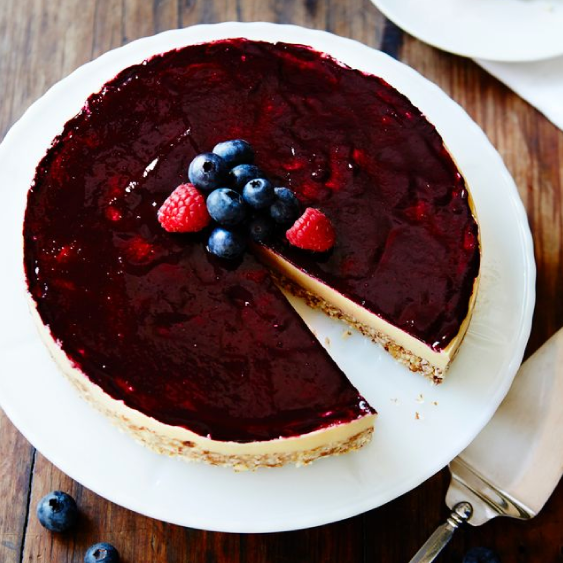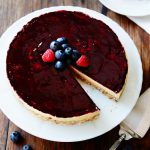Imagine your food is made up of a string of circles, like pearls on a string. Part of the role of digestion is to pull the pearls off the string, so that further along the digestive tract, apparatus, enzymes and the microbiome, only need to deal with single or double circles. Some of us however, might struggle to get some of our foods to this point for myriad reasons and if this is coupled with increased gut permeability (aka ‘leaky gut’), tiny fragments of food can end up in our blood. Food is not supposed to be in our blood; only nutrients from food are.
The blood supply into which the food fragments flow is the same blood supply that goes to your brain. Humans have what is known as the blood–brain barrier, a semi-permeable layer separating the peripheral blood supply from that of the brain. The blood–brain barrier was (up until relatively recently) considered to be a highly selective membrane that only allowed substances into the brain that would be of use. However, we now understand this is not the case. Where gut permeability is increased, the blood–brain barrier is often suspected of having the same increased permeability.
If we could see the food fragments, their structure is very similar to that of opioids. Opioids are substances that help humans feel good. They also help modulate pain. We have our own natural feel-good hormones, endorphins, which have an opioid-based structure. In our brain, and in our gut, we have what are called opioid receptors. Just because your body makes a substance (i.e. a chemical messenger or hormone), it doesn’t mean you necessarily experience the effects of that substance. For you to get the effects generated by that hormone, the substance must bind to a receptor, just like a key fitting into a lock. In this case, when we make endorphins and they bind to the opioid receptors, we feel pleasure. Heroin and morphine are opioids, and they, too, bind to the opioid receptors in the brain. Anything that gives a human pleasure has the potential to be addictive, hence the aforementioned drugs. You can also see from this example how someone might become addicted to exercise. Activity tends to generate endorphins. So, whenever you partake in or experience something that gives you pleasure — like watching a sunset, doing a spin class, playing tennis, appreciating a butterfly or a child’s laughter — you make endorphins which bind to opioid receptors, and you feel pleasure.
How does this relate to food, overeating and energy? Some of the fragments of food that can escape out of a leaky gut into the bloodstream can also have an opioid structure. These include beta-casomorphine and gluteomorphine. They are partially digested fragments of casein (a protein in cow’s milk products) and gluten (a blanket name given to closely related proteins in wheat, rye, barley, oats and triticale). Just like endorphins, these opioids from food also have the capacity to bind to the opioid receptors in the brain and very subtly make us feel good. The effect is not usually noticed as an enormous boost in mood, but the person will often feel as though they can’t live without this food, and they will feel as though they need to eat it in some form daily or even at every meal. Sometimes they start eating it and they can’t stop, although this can be due to numerous reasons, not just an opioid effect.
I have seen this to be the case with countless clients. If a patient has a set of symptoms that warrants them omitting a food from their diet for a trial period to see whether it will make a difference, some people have no problem. There is no resistance. Others will beg me not to take them off a food for a trial, yet they are seeing me because they want results, and the trial would be for four measly weeks – four weeks of omitting a particular food that may just give them the answer to some of their health concerns! There’s no judgment if someone responds in this way; I am simply highlighting that the power food can have over an individual can be just like an addiction. And it can be making them feel exhausted. An individual’s connection to a certain food is often highly emotional, and also potentially physical, through this opioid mechanism.
Food was never intended to fill these roles for us. However, on a physical level, where there is a leaky gut, it is possible that the opioid effect, which some foods have the potential to generate, might be one of the factors behind food addictions, and, hence for some, over-eating or eating and feeling like you can’t stop. This is an area that deserves much more research, time and money, as the opioid excess theory may be involved in numerous health conditions as well as obesity. Much research has already been done in relation to children with autism and adults with schizophrenia, where these exorphins (opioids from an exogenous source — that is, consumed rather than made by the body) have been found to play a role in the expression of some of the symptoms of these conditions, for some people.
Food not only has the capacity to affect our energy, sleep, skin, body shape and size, but also our mood. If you suspect this process is going on for you, consult a nutrition professional experienced in this area and have them guide you to omit all sources of that dietary component (e.g., gluten and/or casein) for a trial period of four weeks. The first four to seven days tend to be the most challenging, yet persevere. The results may be enormously worth it.
This article is based on information in Dr Libby’s book Exhausted to Energized.









